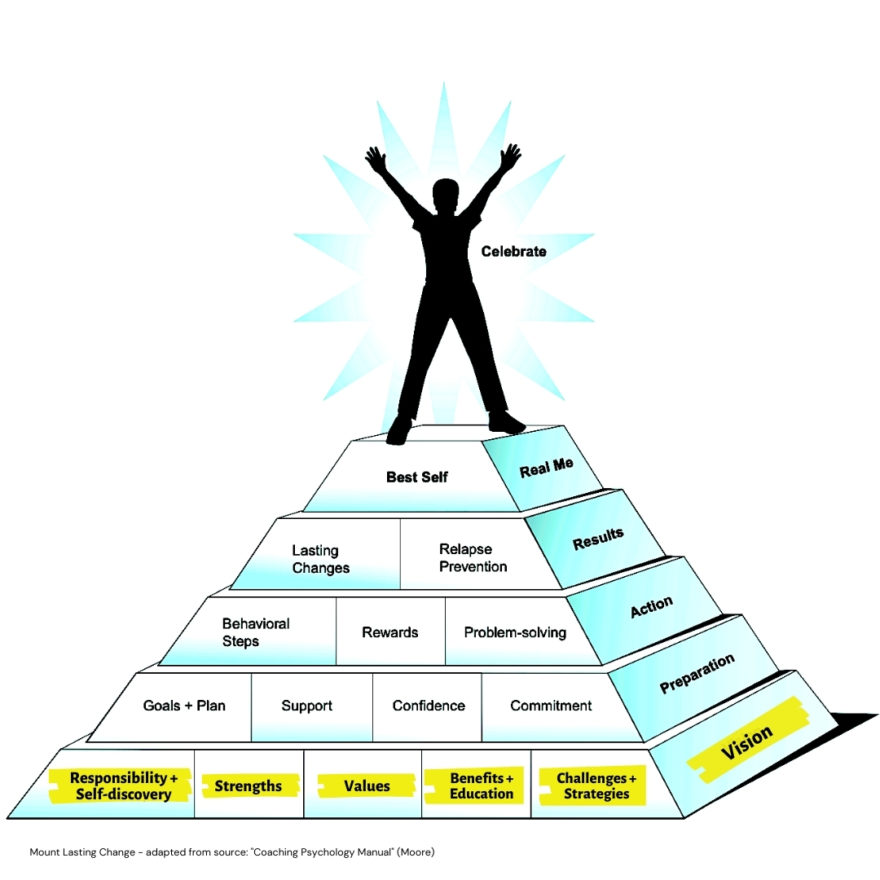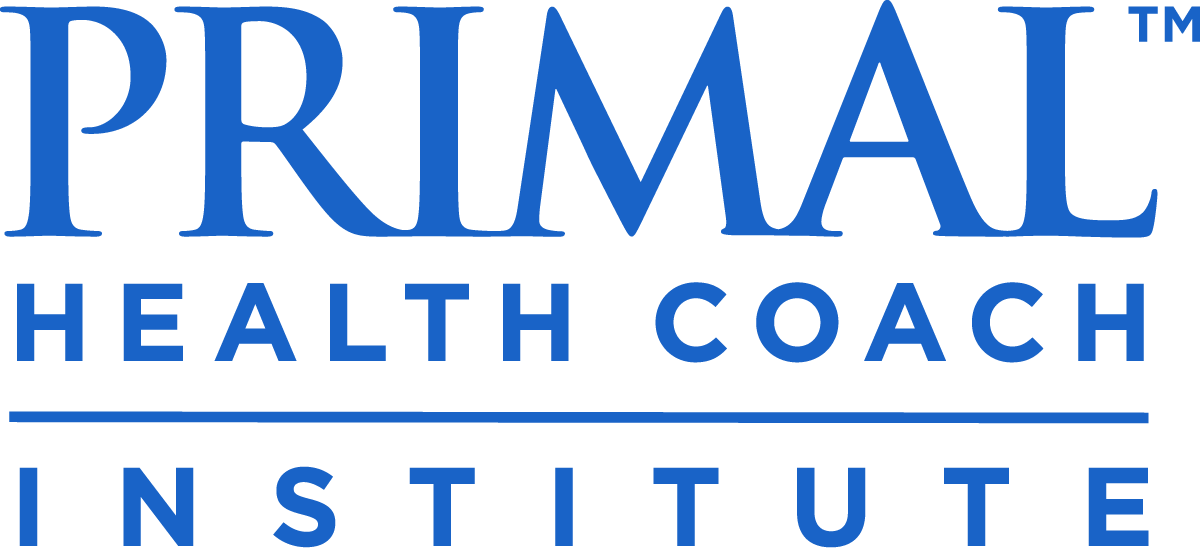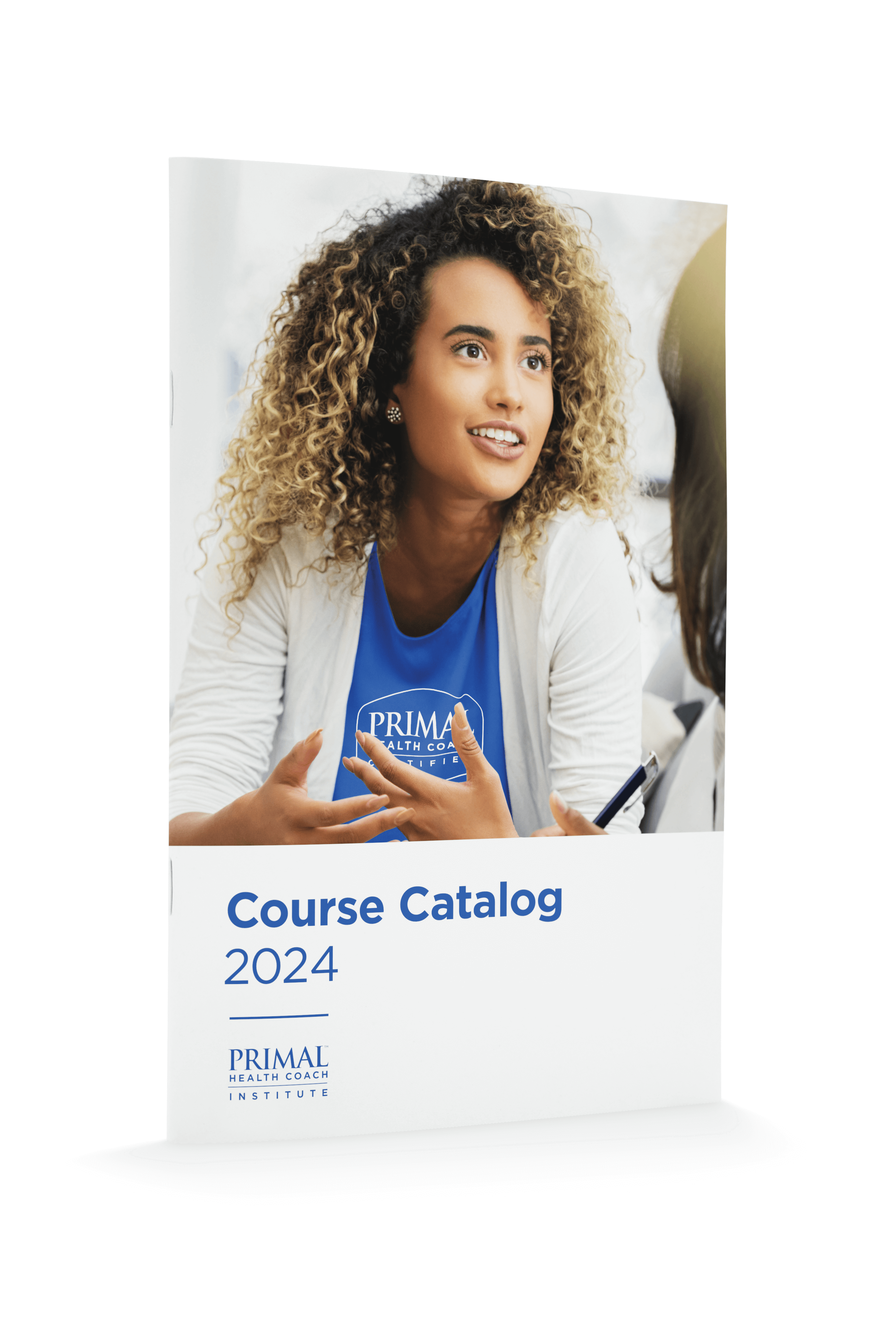An aimless coaching process is like a marathon with no finish line. Without a clear destination that is clear and meaningful, the client lacks purpose, and health coaching lacks its life-changing prowess.
Think of a wellness vision as a directive goal that underlies the entire coaching process. The vision is more broad and progressive compared to a typical outcome goal—like, to lose 20 pounds—and is the driving force behind each clients’ wellness mission.
A wellness vision is a compelling statement of who you are and what health-promoting, life-giving behaviors you want to realize for yourself—starting now.
When coaches co-design a wellness vision early in the coaching process, it helps set the tone of the coaching relationship, building trust and rapport early on and getting clear on the client’s path of inspiration towards goal setting for weeks or months to come.
In today’s article, we’re sharing:
📌 7 Steps to Start Co-Designing a Wellness Vision with Your Client
📌 5 Qualities of an Effective Wellness Vision
📌 6 Out-of-the-Box Wellness Vision Strategies
📌 and 16 Open Questions For Health Coaches to Consider While Co-Designing a Wellness Vision
To better understand the complexity and relevance of a wellness vision, the coaching experts behind Wellcoaches created this graphic metaphor, called “Mount Lasting Change” (image below)—which is explained in-depth inside the Coaching Psychology Manual (Moore, Jackson, and Teschannen-Moran).

The bottom level of this change pyramid speaks to the elements of a wellness vision that represent your clients’ most meaningful purpose and motivators for change.
Notice, on the Vision level, the following elements not only provide information and support for the wellness vision, but also prepare the client for the next stage of change on the pyramid—the preparation level.
The Vision process is supported by:
- Self-Awareness + Responsibility: the client begins “taking charge” and accepting personal responsibility for change.
- Strengths: what strengths, abilities, and resources have proven successful in other areas of the client’s life?
- Values: representing the client’s purpose and deeper meaning for change; who do they want to be?
- Benefits + Information: the client is aware of the benefits of change, and obtains information or education to support self-efficacy and the change process.
- Challenges + Strategies: identification and discussion of conflicting motives, obstacles, and limiting beliefs are ongoing processes during the early stages of change and in the coaching relationship.
Why is it so essential to help your clients design a wellness vision?
A meaningful personal vision contributes to your client’s motivational energy as they move towards their desired goals. It also serves as a foundation on which to build reinforcing platforms for action, results, and an ongoing commitment to their best self.
“Devoting the time to generously explore these vision-level building blocks, prior to moving into preparation and action, is enlightening and valuable. Revisiting and reinforcing the vision building blocks along the way breathes life and inspiration into the change process.” (Moore, p. 107, 2nd Edition)
7 Steps to Start Co-Designing a Wellness Vision with Your Client
Adapted from Coaching Psychology Manual (Moore, p. 131, 2nd Edition)
Step 1. Explain the value of a wellness vision.
Step 2. Discuss what’s working now regarding the client’s health-promoting efforts and behaviors.
Step 3. What are the client’s strengths?
Make a list together, exploring hallmark strengths and lesser-known gifts the client can leverage to overcome challenges or experience more ease in the change process. This is a good time also to ask what achievements they’re most proud of as well as challenges they’ve overcome in the past when they may have doubted themselves before.
Step 4. Identify what people, places, activities, or things help the client thrive and feel most full of life.
Step 5. What changes are most important to the client right now?
Step 6. What are the benefits of making the changes now? What is the driving force and motivation behind this desire to change?
Step 7. Support the client in articulating their wellness vision, using the present tense as if it’s already happened.
Ask for details including the most important elements of the vision, what it looks like and feels like to be at their ideal level of wellness. Ask, “What kind of person are you when you realize this version of yourself?”
5 Qualities of an Effective Wellness Vision
Ask yourself if your vision hits these marks:
- Is it grounded? (building on your current status)
- Is it bold? (stretching your current status)
- Is it important to you right now? (you’re driven to take action now)
- Is it palpable? (believable and written as if it were true)
- Is it participatory? (involving relationships or having an effect on others)
6 Out-of-the-Box Wellness Vision Strategies
As with all strategies of effective coaching, it’s important to remember that each client is unique. A traditional wellness vision statement may not resonate with a particular client, while some of these more creative, out-of-the-box versions will.
- A coach-guided visualization exercise.
- Create an acronym. For example, STRIVE: Self-Aware, Truthful, Resilient, Introspective, Valiant, Essentialism
- Design a vision board.
- Write a wellness vision in the form of poetry.
- Express your vision through art or music.
- Write a letter from the perspective of your future self.
16 Open Questions to Consider While Co-Designing a Wellness Vision
- How would your life be different if you discovered a healthy, more confident version of yourself? Describe, in detail, the feelings and things you’ll experience when you realize this version of yourself.
- What are one or more things you most want to achieve in your life?
- What do you believe is possible for you in the next year (3 years, or 5 years)?
- What would you like to experience more of in your life?
- What part of your life is most important to you? Follow-up question: In what ways can that align with your well-being?
- What would you like to experience less of in your life? Follow-up question: What are some obvious or even imaginary ways that could be possible?
- What gives you energy or excites you? Follow-up question: In what ways can this enhance your well-being?
- What are you like when you’re at your best? When you shine, when you feel great, when others are drawn to you?
- What strengths and skills do you possess that make certain parts of your work or life more effortless or enjoyable?
- What resources (time, money, freedom, family/friends, groups) do you have that can be leveraged to help you succeed on your wellness journey?
- What do you see yourself doing consistently 3 months from now that would get you closer to your wellness goals?
- What are your primary motivators to change?
- What keeps you going when times get tough?
- What will you experience from making these changes? How will it feel?
- What are some of the top values in your life? Consider principles you live by, areas of your life that are your passions, positive characteristics that define you or drive you…
- How might your values be connected to your journey for well-being?
Now that you have the map to help co-design a wellness vision with your health coaching clients, think about when and how this will fit into your coaching process. Remind your clients that this helps them get excited about the possibilities for their future. It’s all about what’s truly important to them as an individual because that’s what will have the most fulfilling impact on their life.



